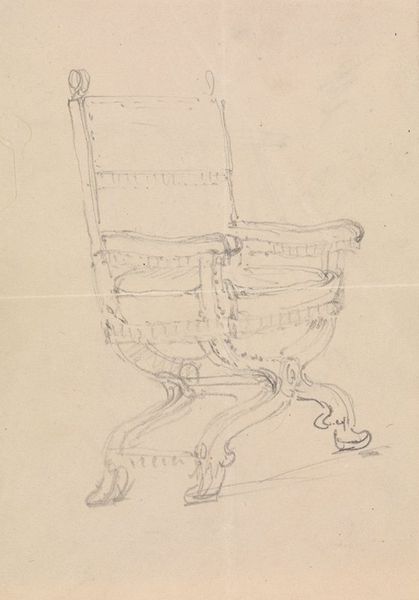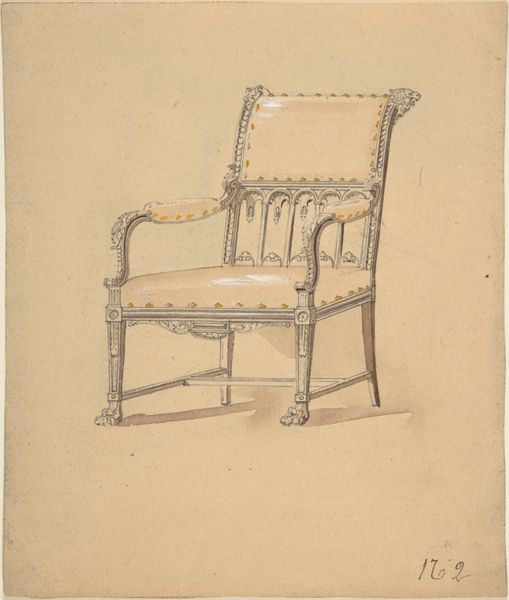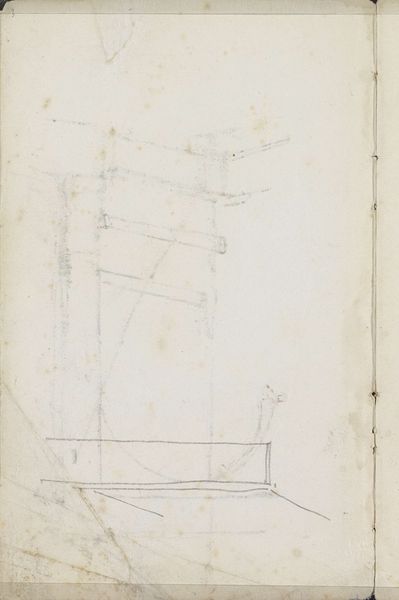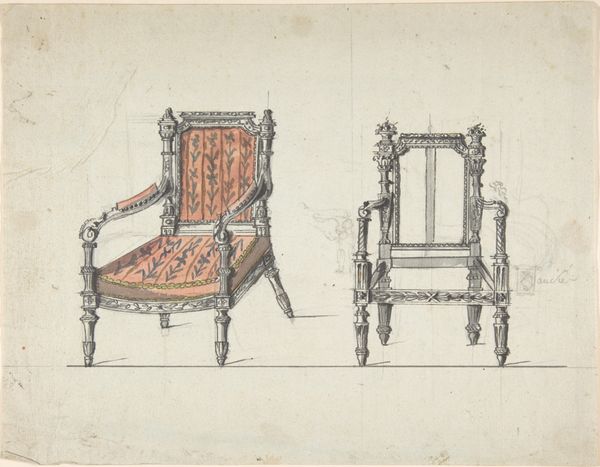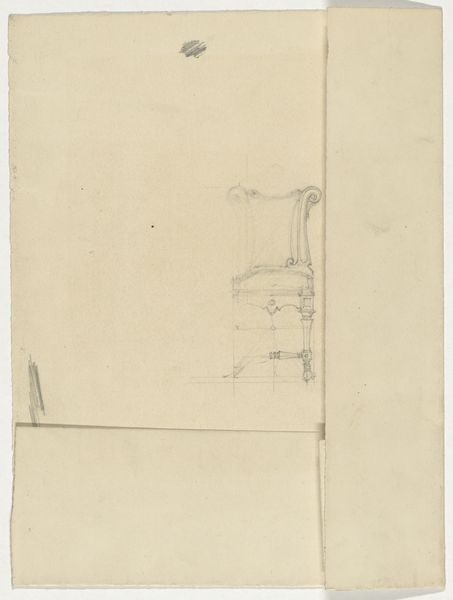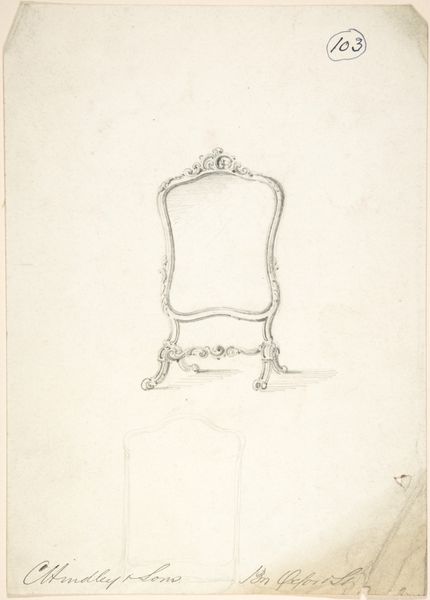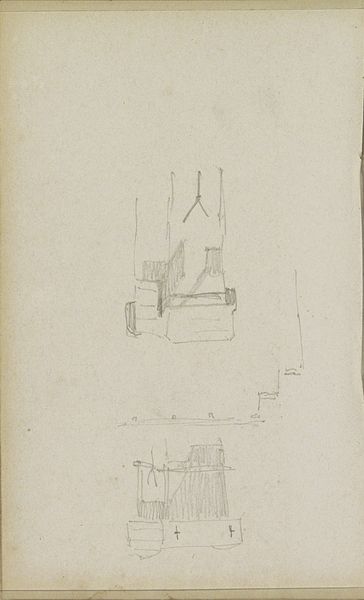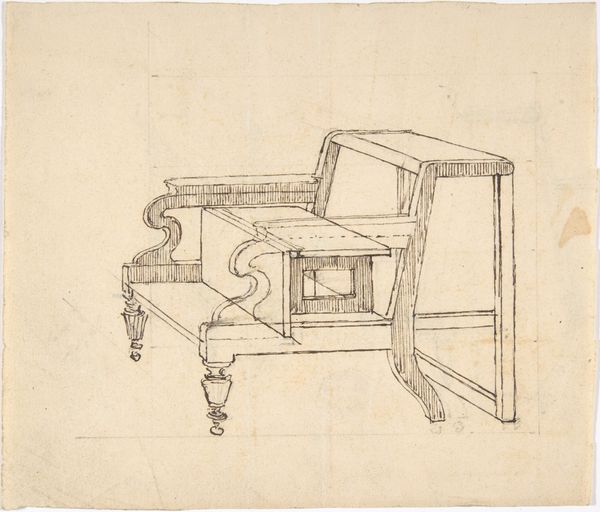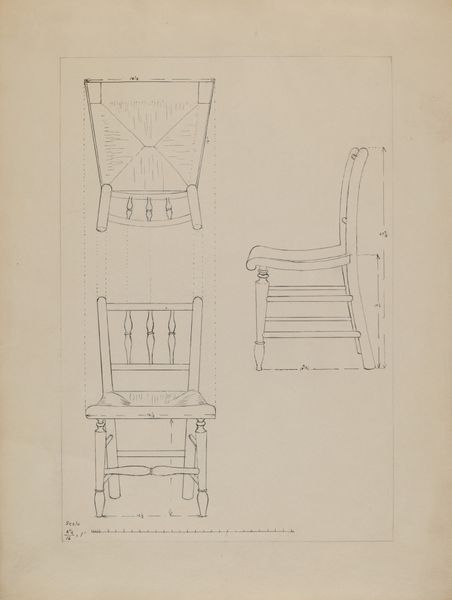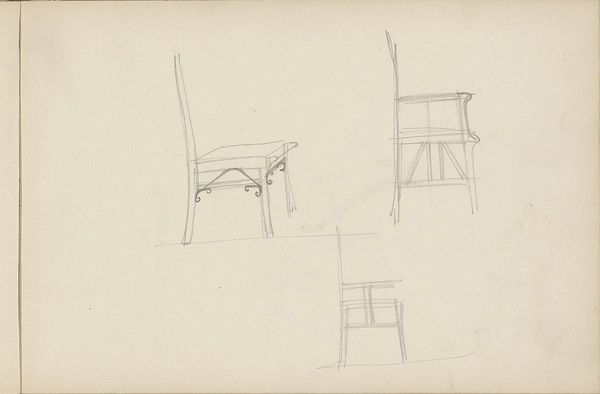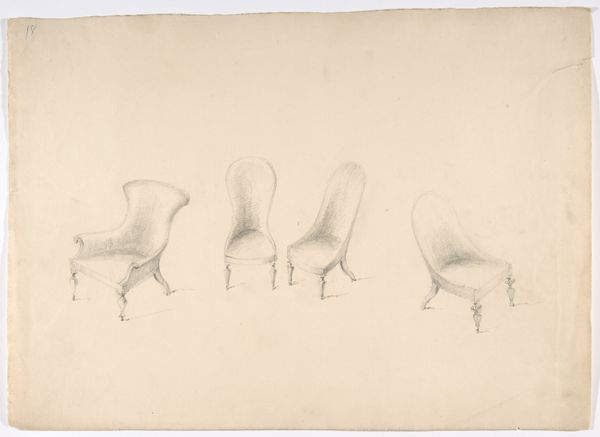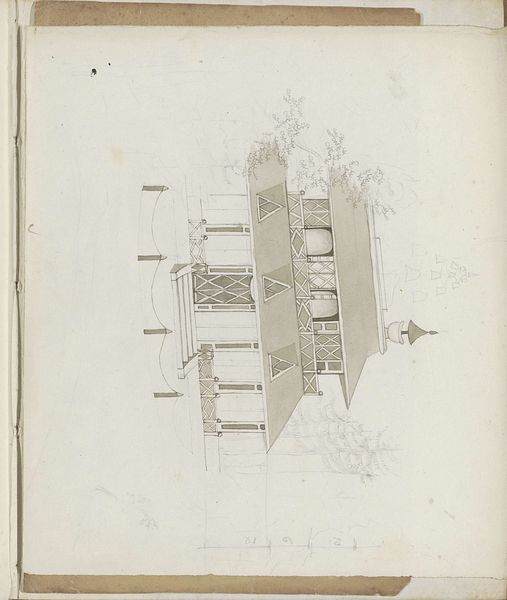
drawing, paper, pencil
#
drawing
#
figuration
#
paper
#
form
#
geometric
#
pencil
Dimensions: height 288 mm, width 231 mm
Copyright: Rijks Museum: Open Domain
Curator: Let’s turn our attention to this drawing titled "Ontwerp voor een armstoel," or Design for an Armchair, dating back to around 1840 and attributed to Firma Feuchère. What are your first thoughts? Editor: Elegance distilled. The fine pencil work on this paper reveals a form that speaks to opulence and possibly to the very power dynamics inherent in designed objects. I am interested in the amount of material, labor, and, of course, money that something like that represents. Curator: Exactly. Firms like Feuchère catered to an aristocratic clientele during the July Monarchy and into the Second Empire, fashioning designs meant to impress and reflect status. Notice the intricate detailing—a hallmark of the era's revivalist styles. It reflects both luxury and a political environment wanting to portray power. Editor: The act of drawing itself becomes a crucial element. It isn’t just about the final product. This detailed rendering elevates design to art, blurring the lines between tradesmanship and artistic expression, but also highlighting its origin from manual craft and expertise, it also shows a design process and its labor implications. Curator: A delicate point, certainly. The materiality is subtle here: a simple pencil on paper, yet envision the chair realized in rich textiles and carved wood! The drawing acted as a vital conduit between the designer's vision and the artisan's execution, embodying socio-economic relations of the era. Editor: And what a vision! Think about the means: the mines for the metal tools to work with the paper and the lead for the drawing material... But yes, let’s not forget the actual experience of sitting in a chair like this—it shapes posture and commands a presence; its labor literally is "present." A drawn artifact that represents all that. Curator: The high back and ornamented armrests speak to a specific kind of posture and presence—a physical manifestation of authority translated into material form to dominate rooms of wealth. This wasn't just a chair, but a statement. Editor: It still speaks loudly, wouldn't you say? Tracing it backwards reveals labor, means, material, power, and the soft yet sharp mark that design and execution both represent and solidify social relationships in a tangible, crafted thing. Curator: I agree. A fascinating glimpse into the history of taste and the role of design in constructing social identity. Editor: A dense, interesting study in form and society in its apparent simplicity.
Comments
No comments
Be the first to comment and join the conversation on the ultimate creative platform.
